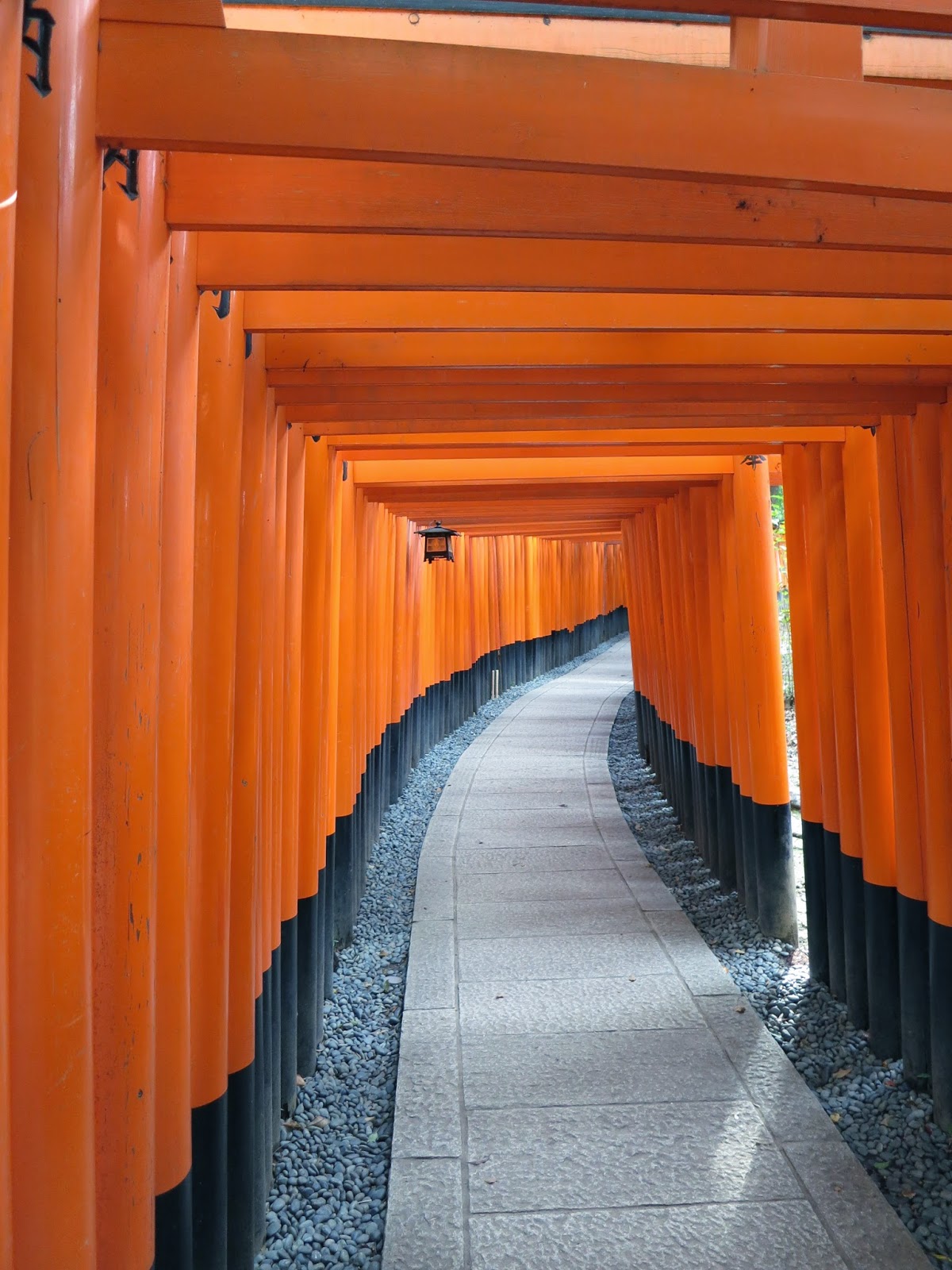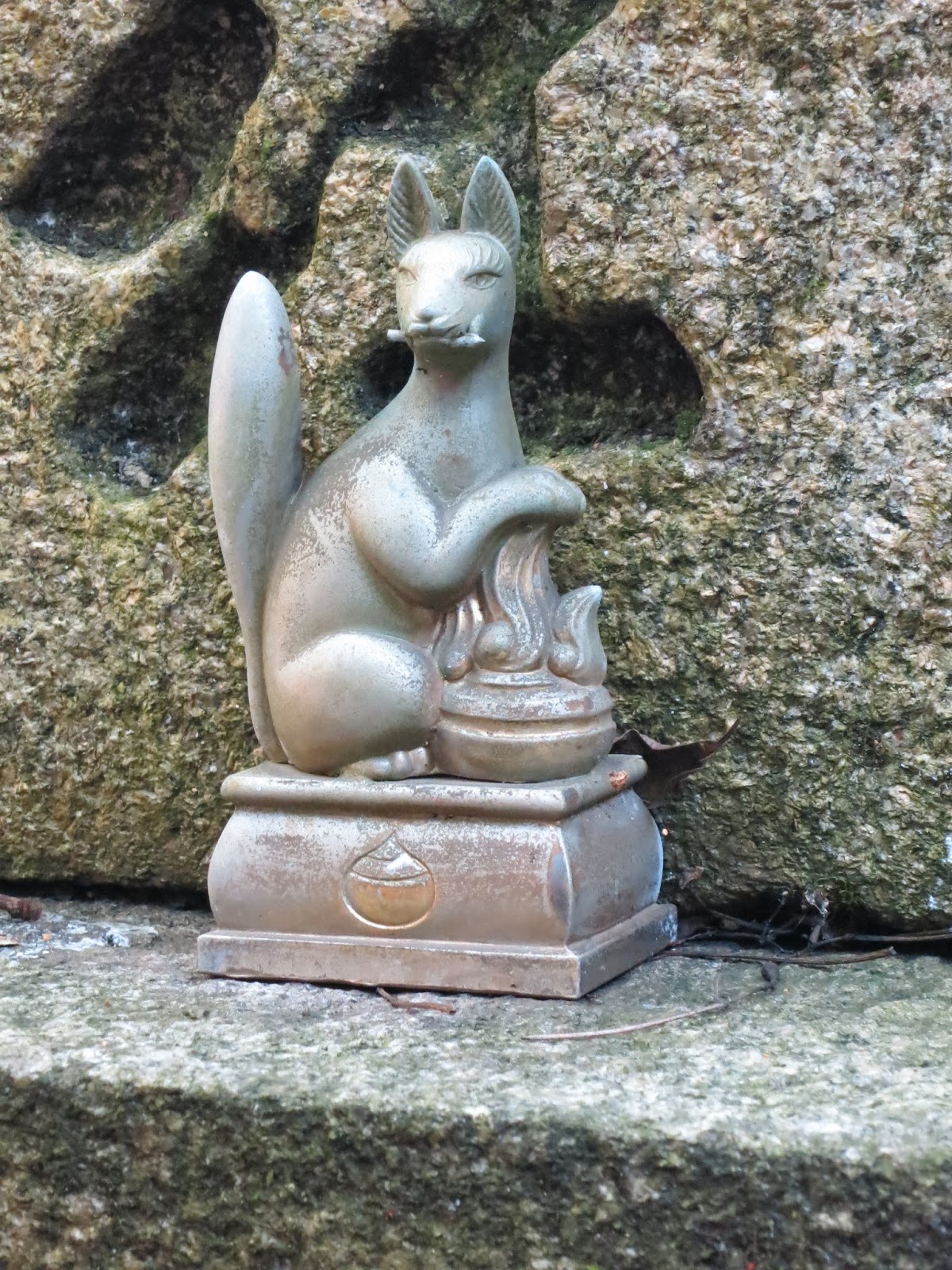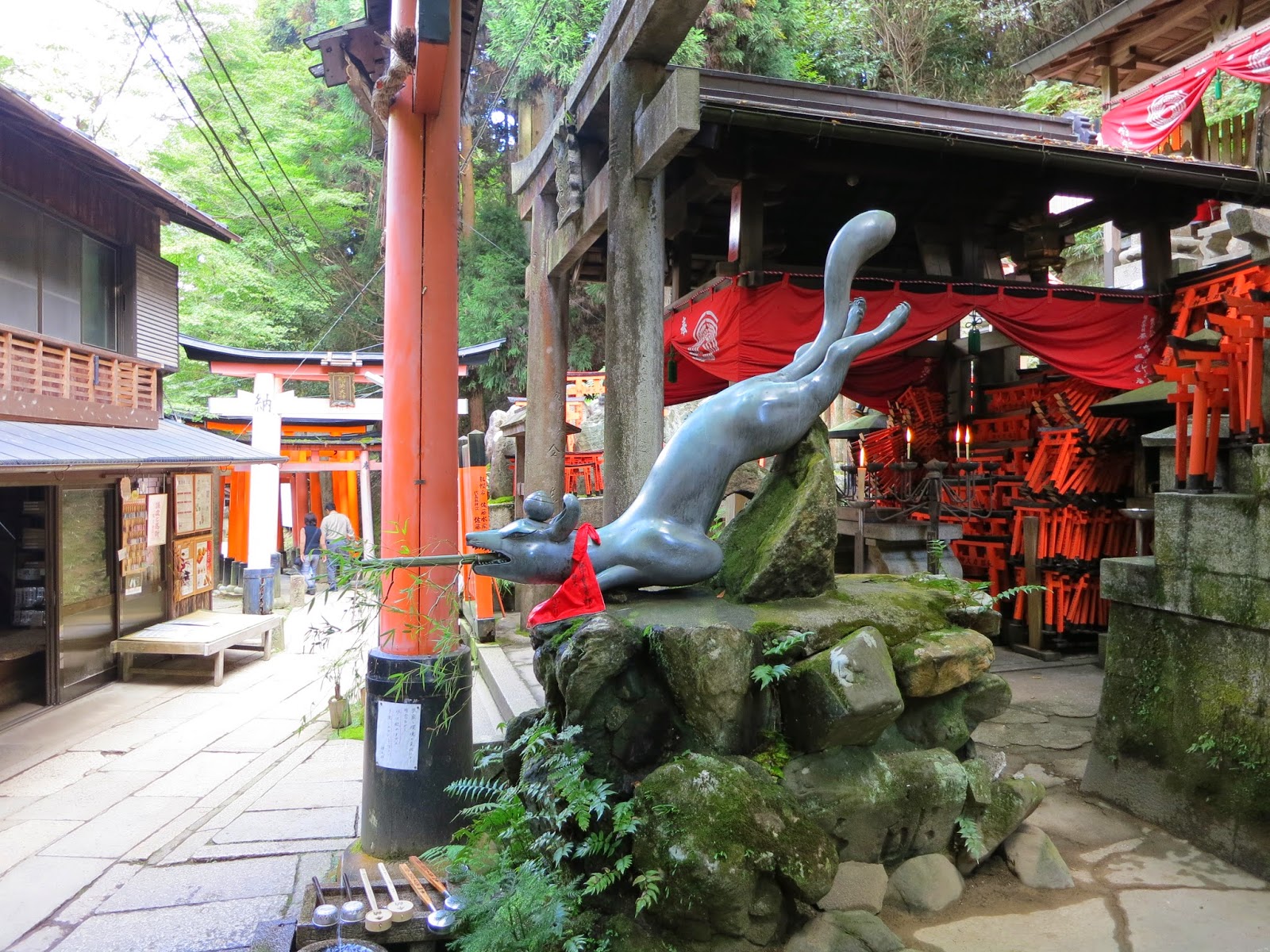Not everything always goes well on a vacation or a tour of any kind. Even in Japan, we had hiccups now and again for all of our fortunes. Our ninth day is a perfect example, but it ended with small treasures that make up for the problems.
This is a shopping street on the way up, very touristy feeling.
Couryard of Kiyomizu
Pausing to look at the shops and stalls on the way.
Temple gate at Kiyomizu
It is an impressive approach to the temple proper.
Votive ema on the temple walls.
Day nine was very tough for me because it was something of a letdown in a location I had desperately wanted to
see my entire life. We rode the train
to Kiyomizu Temple with plans to walk from there along the hills and down to
the Heian Shrine. Kiyomizu was the first
stop. If you don’t know the name, you
will likely recognize its porch set against the backdrop of Kyoto beneath it on
the hill.
This was perhaps the one time where our timing was completely off. There were crowds upon crowds of people when we arrived, and the way to Kiyomizu was mobbed because it was a shopping street. Arriving there, we found even more people, because it’s a very popular temple. We could scarcely move to breathe on the famous veranda.
This was perhaps the one time where our timing was completely off. There were crowds upon crowds of people when we arrived, and the way to Kiyomizu was mobbed because it was a shopping street. Arriving there, we found even more people, because it’s a very popular temple. We could scarcely move to breathe on the famous veranda.
Standing there, though, we had a
lovely view down below and out to the city beyond.
The whole of the structure supposedly doesn’t have a single nail in it,
and it's very impressive to see. But this was perhaps the one location that felt entirely like a tourist trap above being
a temple.
A "Love" stone at Kiyomizu. Supposedly if you walk from one to another you will find true love. The area was very kitschy. It seemed so out of
place compared to the more peaceful settings we’d been to the previous
day.
Kiyomizu is also known as a temple of sacred waters. Here people line up to wash their hands and drink from the sacred waterfall. It is a place for students to wish for good grades. As you can see there are a few kids in yellow hats on the left. This is standard "field trip" attire.
Despite the crowds, Kiyomizu is a remarkable setting.
There is a fantastic view of Kyoto.
It's amazing to think this structure is so many centuries old and one of the greatest symbols of Kyoto.
Even our friendly kitsune have a place here.
Higashiyama was a nice reprieve because
the crowds vanished, and we were left in a narrow pedestrian street surrounded
on either side by wooden shops and houses. There were tea houses, incense shops, pottery stores and art depots. The people here were warm and friendly, and
there was a sense of ancient nuisance about it.
This was the Kyoto I always imagined, and not the telephone forested
streets everywhere else.
The approach to Higashiyama. Note the lack of people.
It is a warren of narrow streets and unique shops and homes.
This is what I imagined Kyoto to truly be.
I imagine the owners live upstairs.
It is easy to want to get lost here.
We passed several shrines but did
not go in as it required to pay in order to enter. One had a huge statue of a Kannon, and we
figured we could see it well from the outside without going in.
The highlight of this part of the day came at Shorenin Temple. At first I was disappointed because the temple itself was under massive reconstruction and we couldn't see the actual structure. Touring inside, we passed by massive statues of Buddha and Kannon, all made of gold, and emerged into a large hall. There, we found that there was a Buddhist ceremony going on.
We took off our shoes and sat down on the tatami mat floor to watch, along with many others who entered before and after. Observing the priests, we listened to them chant softly as they approached their altar with some kind of offering. Another priest kept slowly banging on a great ornate fish-shaped bell beside him. It was the only religious ceremony we witnessed, but it left a profound impact. We left feeling re-energized and ready to wind down to the Heian Shrine.
We skipped this temple. You had to pay to see the Kannon statue up close. Strange, you can see it just fine for free outside.
The highlight of this part of the day came at Shorenin Temple. At first I was disappointed because the temple itself was under massive reconstruction and we couldn't see the actual structure. Touring inside, we passed by massive statues of Buddha and Kannon, all made of gold, and emerged into a large hall. There, we found that there was a Buddhist ceremony going on.
We took off our shoes and sat down on the tatami mat floor to watch, along with many others who entered before and after. Observing the priests, we listened to them chant softly as they approached their altar with some kind of offering. Another priest kept slowly banging on a great ornate fish-shaped bell beside him. It was the only religious ceremony we witnessed, but it left a profound impact. We left feeling re-energized and ready to wind down to the Heian Shrine.
Built after the war as a part of
reconstruction, the Heian Shrine is in the style of ancient palaces that once
stood in Kyoto when it was the capital of Imperial Japan. It’s a distinctly Korean influenced building
with high sweeping teal roofs and great wings that spread to either
side. In front is a courtyard with
dragon and tiger fountains respectively on either side. We were here to see the garden that lay
beyond and it did not disappoint.
Where's the talking caterpillar?
Entering the gardens of the Heian
Shrine is something akin to walking into Wonderland as Alice might. Everywhere there are signs that say “This
way, this way.” I don’t know if this is
a joke or serious, but we just kept to the left. It was an unusual thing to be
certain. The garden is gorgeous to
behold, winding around trees that probably blossom in the spring.
There’s a huge lake that runs in the center with a tea house on one side and a magnificent wooden bridge straddling it. At one point we passed a little area with stepping stones in the middle of the water. These are known as the dragon stones, though we don’t know why, but they were fun to jump across while fish stared at us wondering what we were doing. Speaking of fish, magnificent carp come up to you all over this gate with their big gaping mouths seeking food. They obviously are well fed and know the tourists when they see them.
These are called the dragon stones. We took some courage and crossed them.
FEED MEEEE!
There’s a huge lake that runs in the center with a tea house on one side and a magnificent wooden bridge straddling it. At one point we passed a little area with stepping stones in the middle of the water. These are known as the dragon stones, though we don’t know why, but they were fun to jump across while fish stared at us wondering what we were doing. Speaking of fish, magnificent carp come up to you all over this gate with their big gaping mouths seeking food. They obviously are well fed and know the tourists when they see them.
A tea house.
We took a short break on the
bridge and sat to gaze out at the whole of the garden. It’s not hard to imagine yourself as a
courtier gazing at the floating leaves, hear the trickling water and forgetting that you are not ten yards away from a busy section of the city.
This scene at the temple was just spectacular.
Higashiyama and Heian Shrine were the highlight of day 9. We could have sat and listened
to the priests chant for hours and been content. I suppose the quiet moments were the ones we
cherished the most in our busy schedule, and we certainly didn’t have too
many. Looking back I would go to each
of these places again, though perhaps Kiyomizu would have been better if we’d
seen it much earlier in the day.








































































